Key Points
- The U.S. mutual fund business operates in a highly competitive financial services market. The
600 organizations that offer mutual funds compete among themselves and with other investment
services and products. - Three types of pressures stand out as drivers of mutual fund competition. The 90 million fund
shareholders’ demand for investment performance and services at a competitive level of fees and
expenses continually impacts mutual funds. - Mutual fund shareholders are heavily invested in lower-cost funds with above-average, long term
performance. More than three-quarters of stock and bond fund assets are invested in funds
charging below-average operational and management expenses; nearly two-thirds of stock and
bond fund assets are held in funds with above-average, 10-year performance records.
A Large Number of Mutual Fund Sponsors Compete for Investors
The U.S. market for mutual funds is highly competitive
and dynamic and provides strong market incentives
that reward or discipline fund sponsors based on their
ability to meet their shareholders’ investment and
service needs and demands.
More than 600 fund organizations offer funds
that manage investors’ assets, and fund investors can
redeem their shares in a fund at any time, requiring
fund sponsors to continually compete with one another
to retain and attract investors. In 2005, for example,
shareholders redeemed about one-quarter of their
stock and bond mutual fund assets and, in every year
since 1990, between one-quarter and one-half of fund
sponsors experienced net outflows from their long term
funds (Figure 1).
Mutual funds not only compete among themselves
for investors, they also compete with other investment
services and products. Mutual funds manage about 20
percent of household fi nancial assets. Investors and
their fi nancial advisers can also choose to invest in
bank deposits, insurance products, separately managed
accounts, direct holdings of stocks and bonds, hedge
funds, real estate investment trusts, exchange-traded
funds, and other investment products.
The large number of fund sponsors and the
dynamic nature of the financial services market have
kept market concentration of the largest fund sponsors
stable for the past 15 years. For example, in 1990,
the 10 largest mutual fund sponsors managed 53
percent of mutual fund assets; in 2005, the 10 largest
firms managed 48 percent of the assets (Figure 2).
Competition and other market dynamics have also
altered the rankings among fund companies, such
that many funds once ranked among the largest
firms no longer exist or have fallen in their assets under-
management ranking. Of the 10 largest mutual
fund sponsors in 1990, five were not ranked among the
top 10 in 2005.
Shareholders Place Competitive Pressures on Funds
Approximately 90 million investors, with a wide range
of financial objectives and service needs, currently
own mutual fund shares. These shareholders can
use a variety of resources to choose the funds that
best meet their investment goals and service needs.
For example, funds provide a large amount of
information — available through disclosure documents,
media sources, online search tools, and fund
web sites—that helps investors select funds.
Fund shareholders often receive additional
assistance in processing this information when
selecting funds. Nearly two-thirds of all fund
shareholders invest in mutual funds through retirement
plans at work, and employers sponsoring these plans
rely on this information to choose the funds and
other investments that they offer to their employees.
Among shareholders who own funds outside of work
retirement plans, 80 percent use financial advisers, who
help investors identify the funds or other investments
that best meet their financial goals.
Competition, in general, drives firms to
innovate and thereby differentiate themselves in the
marketplace. This differentiation can take the form
of fees, service, and other factors that allow funds to
target particular groups or types of investors. Over
time, however, shareholders reward funds that are
best able to deliver performance and service at a
competitive level of fees.
Pressure to Compete through Performance.
Shareholder demand for performance is one of
the most widely documented competitive forces.
Numerous academic papers have demonstrated that
the best performing funds receive most of the net
new cash flow.1 Moreover, mutual fund assets are
concentrated in long-established funds with above average
performance histories.
Investors, with the help of their financial advisers
and retirement plan sponsors, appear to favor long tenured
funds. From one year to the next, investors
have held roughly three-quarters of their stock and
bond fund assets in funds that have operated for at
least 10 years (Figure 3). Fund shareholders’ tendency
to invest in these funds is striking because during the
past two decades there has been tremendous growth in
the creation of new funds to meet the growing investor
demand. In fact, only 10 to 20 percent of all stock and
bond funds in any given year since the mid-1990s have
been open for a decade or longer
When shareholders choose among funds with
long performance records, they favor those funds that
have the best long-term performance. Those stock
and bond mutual funds ranked among the top half
of their peers, as measured by 10-year performance,2
manage more than three-quarters of the assets held by
funds with performance histories of 10 years or longer
(Figure 4). Taking together investors’ preference for
long-tenured funds with above-average performance,
investors held nearly two-thirds of all of their stock and
bond fund assets in funds with above-average, 10-year
performance records.
Pressure to Compete with Service Innovation.
Shareholders also pay close attention to fund services.
Mutual funds offer a broad range of services as
competition drives them to innovate and offer new
and better services. For example, fund organizations
typically maintain elaborate web sites that provide
current and prospective investors with information
about mutual funds and investing, and upgrade
their web sites with information and services not
available 15 years ago (Figure 5).3 Fund companies
have also significantly expanded the scope of other
shareholder services, including information provided
on shareholder statements and via the telephone.
Other, more tailored services appeal to particular
groups of investors. Walk-in offices in multiple
locations serve shareholders that prefer the option of face-to-face contact with fund service personnel.
Many shareholders use a financial adviser when buying
funds, and fund organizations offer share classes
designed for investors who choose to employ advisers.
These share classes serve to bundle financial adviser
services with the services that funds provide.
Another service that varies among funds is the size
of the investor account that a fund will accommodate.
Funds that offer low account minimums must hire
more staff and devote more resources to service the
additional shareholders than do similarly sized funds
with fewer investors and larger account balances.
Consequently, funds that make investing more
accessible by offering low initial minimums often
have higher expenses than funds that have larger
average accounts
Pressure to Compete on Cost. Although
shareholders purchase funds for performance and
service, they also are heavily invested in lowercost
funds. Investors hold most of their stock and
bond fund assets in funds charging below-average
operational and management expenses (Figure 6).
This trend is observable when examining investor
ownership of both index and actively managed
mutual funds (Figure 7).
The demand for lower-cost stock funds seems
particularly notable in recent years. About 90 percent of
the net “new cash” fl owing into stock funds since 2003
went to funds with costs lower than the median fund,
compared with 75 percent of the flows to funds below
the median in the mid-1990s.
The use of fee waivers to attract and retain
investors provides further evidence that funds compete
on cost. Small funds tend to have higher operational
costs, when measured as a percentage of assets, than
larger funds. This largely occurs because funds often
experience operational efficiencies as they grow in size,
helping to keep costs down. Small funds’ expenses
typically do not reflect their full operational costs
because many small funds waive a portion of their fees
in order to compete with the larger funds (Figure 8). If
competitive market forces were not at play, these small
funds would not have to waive fees and could charge
the level of fees necessary to operate the fund and
provide a profi t to the fund sponsor.
Conclusion
Hundreds of fund sponsors compete aggressively
for investors’ business. No mutual fund sponsor
has a guaranteed base of investors because mutual
fund investors can move their assets at any time to
another fund or a competing product. In this dynamic
marketplace, fund sponsors must continually strive
to deliver performance and service at a competitive
level of fees to their shareholders. These forces, along
with the widely available information about funds
that investors and their financial advisers use to
compare funds, provide a strong market discipline to
organizations that sponsor funds.
Notes
- For example, see Diane Del Guercio and Paula Tkac, “Star
Power: The Effect of Morning star Ratings on Mutual Fund
Flows,” Federal Reserve Bank of Atlanta Working Paper, 2001–
15, August 2001; Erik R. Sirri and Peter Tufano, “Costly Search and Mutual Fund Flows,” Journal of Finance, 53, 1589–1622; and Judith Chevalier and Glenn Ellison, “Risk Taking by
Mutual Funds as a Response to Incentives,” Journal of Political
Economy, 105, 1167–1200. - Funds were ranked within their CRSP investment categories.
The investment categories used to rank funds by performance
were asset allocation, domestic equity, global equity, global
fixed income, domestic tax-exempt fixed-income, and domestic taxable fixed-income. - Many services that major fund companies now offer were not
available in 1990. Investor statements now list holdings of
outside funds, benchmarks, cost basis, portfolio summary, and personal returns, none of which were offered in 1990. Newer services now available through phone service representatives include balance information, ability to conduct exchanges and redemptions, make address changes, and make direct deposits and payments. Automated phone services now provide transaction history, balances, and the ability to conduct exchanges and redemptions and order tax forms and additional
statements.
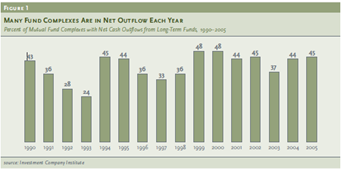

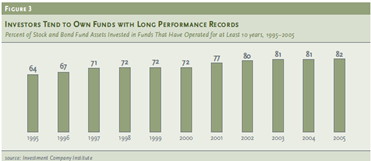
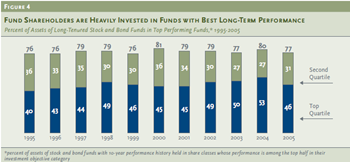

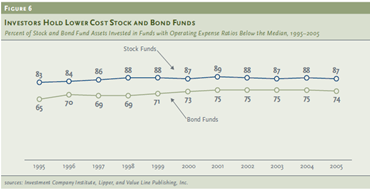
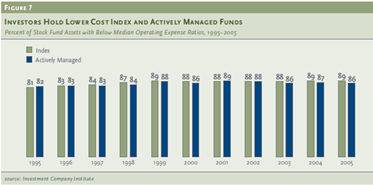


No comments:
Post a Comment